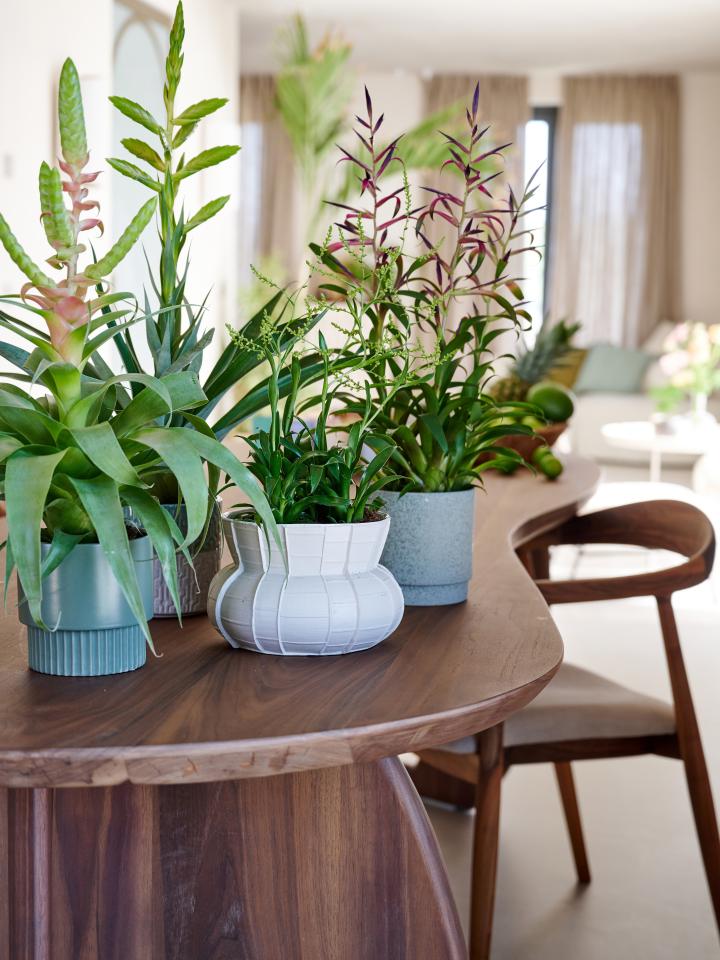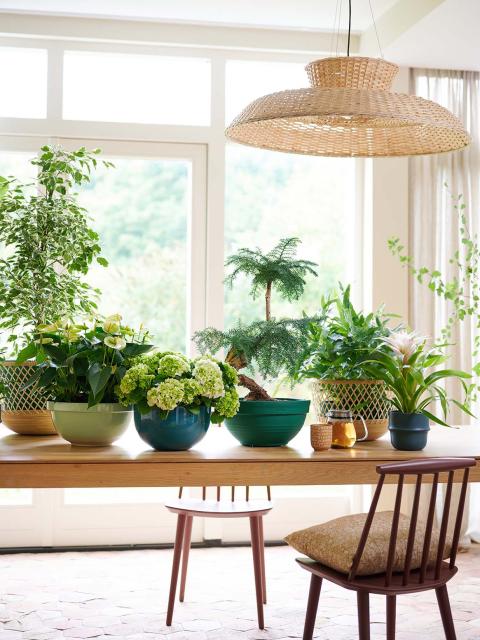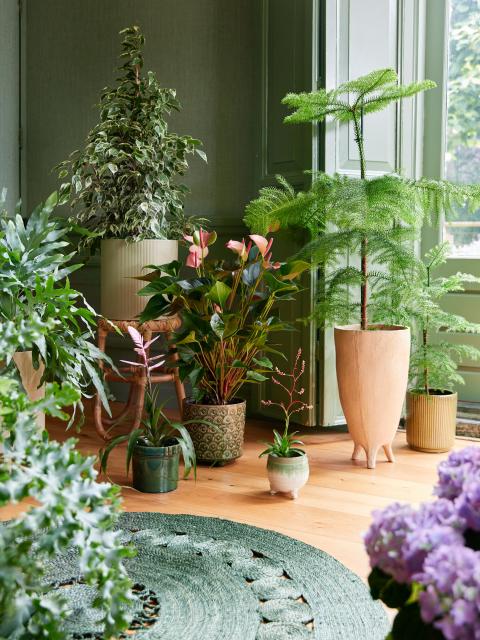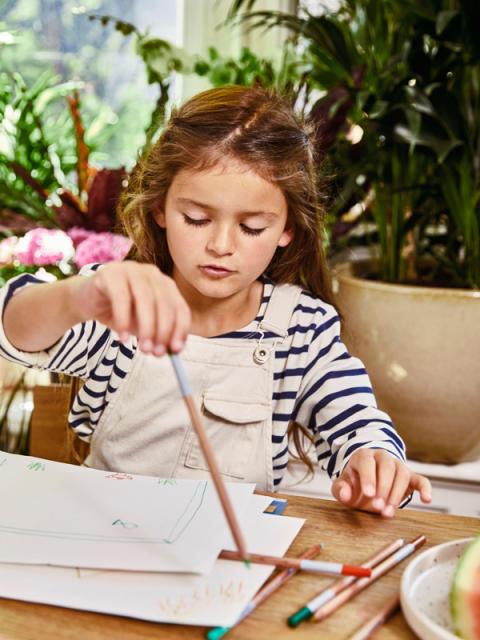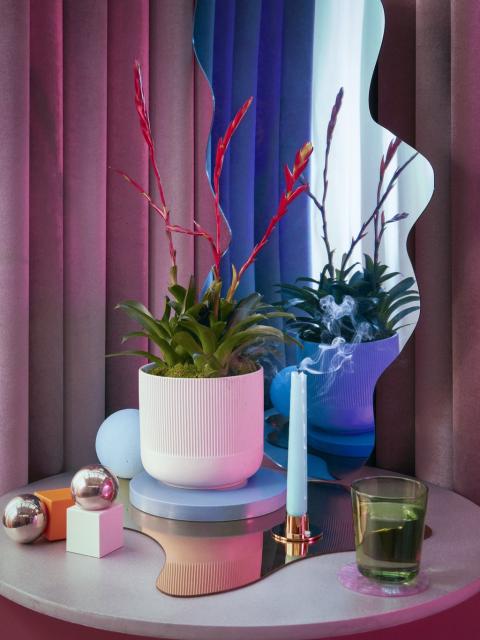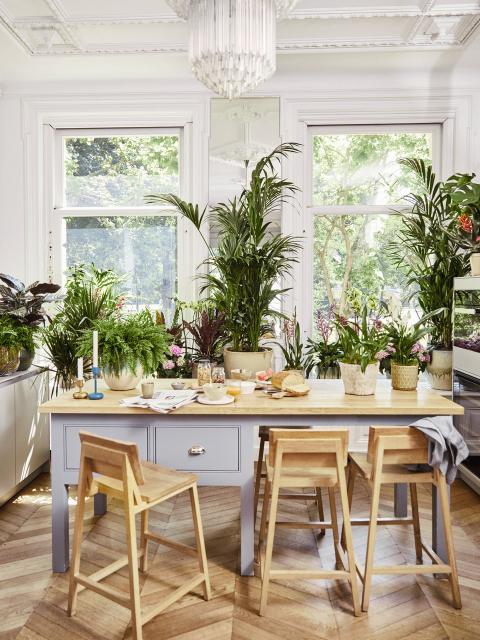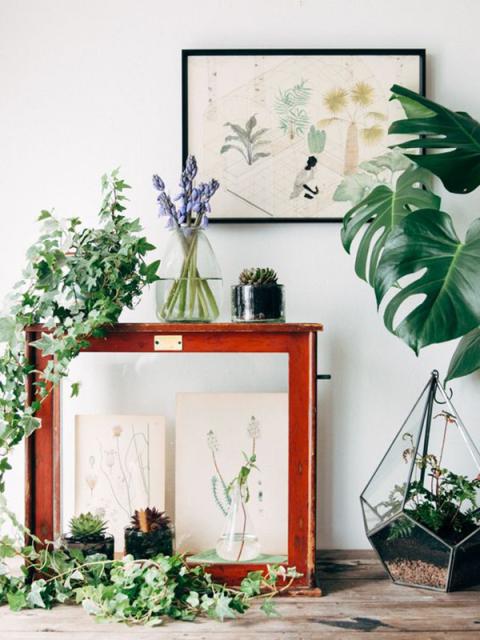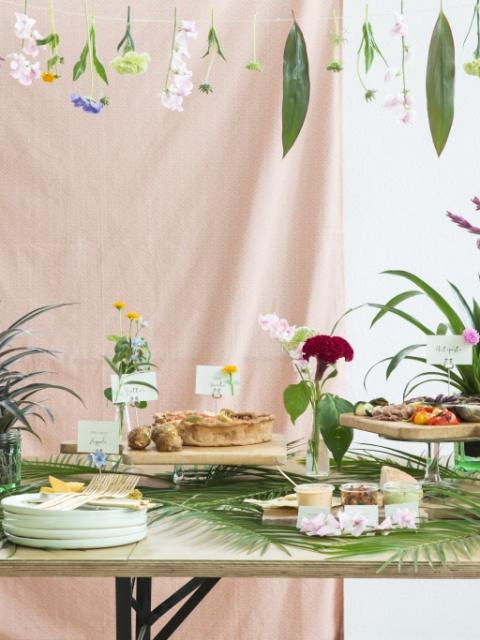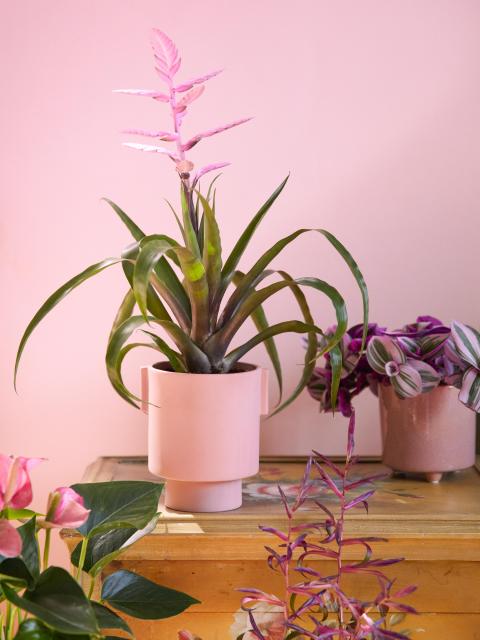Colours and shapes
Bromeliads have shapes that you want to touch to check whether they really are real. In exchange for a bit of light and a drop of water, they treat you to spectacular colours and a tropical feel. There are more than 2800 species, the most beautiful and easiest of which have been adopted as houseplants. The best-known are Guzmania (trumpet), Aechmea (silver-grey rosette), Vriesea (feather shapes), Neoregalia (red calyx) and Tillandsia (antennae and paddles). The club also includes the ornamental pineapple plant, Nidularium, hanging Billbergia and Cryptyantus. What we often think of as bromeliad flowers are actually coloured bracts. The flowers themselves are very small.
Symbolism
Incas, Aztecs and Mayans used almost every part of the plant for food, shelter, fibres and ceremonies. As a result, the Bromeliad is viewed as a ‘gift from the gods’ in these countries. As a houseplant, Bromeliad represents ‘protection’: a reference to the full, green foliage that surrounds the beautiful coloured part.
Origin
Bromeliads probably developed in the Cretaceous period some 65 million years ago. Fossil specimens have been dated to 30 million years ago, so that they can justifiably be considered primaeval. Bromeliads originate from the rugged Andes mountains and the warm jungles of Uruguay, but are now found throughout Central and South America. Some species grow on the ground, whilst others are epiphytes, meaning the plant grows on trees without extracting nutrients from it, using its leaves and roots to get moisture from the air. Belgian merchants brought Bromeliads back to Europe in the 18th century, and those plants formed the basis for the fantastic plants that are available here now.

